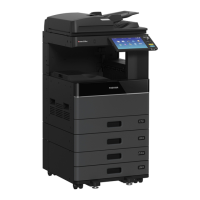
Do you have a question about the Toshiba e-studio 120 and is the answer not in the manual?
| Type | Digital Copier |
|---|---|
| Functions | Copy, Print, Scan |
| Resolution | 600 x 600 dpi |
| Paper Capacity | 250 sheets |
| Print Speed | 12 ppm |
| Print Resolution | 600 x 600 dpi |
| Interface | USB 2.0 |
| Scan Resolution | 600 x 600 dpi |
| Copy Speed | 12 ppm |
| Paper Size | A4, A5, B5, Legal, Letter |
| Zoom | 25% to 200% |
| Multiple Copy | Up to 99 copies |











